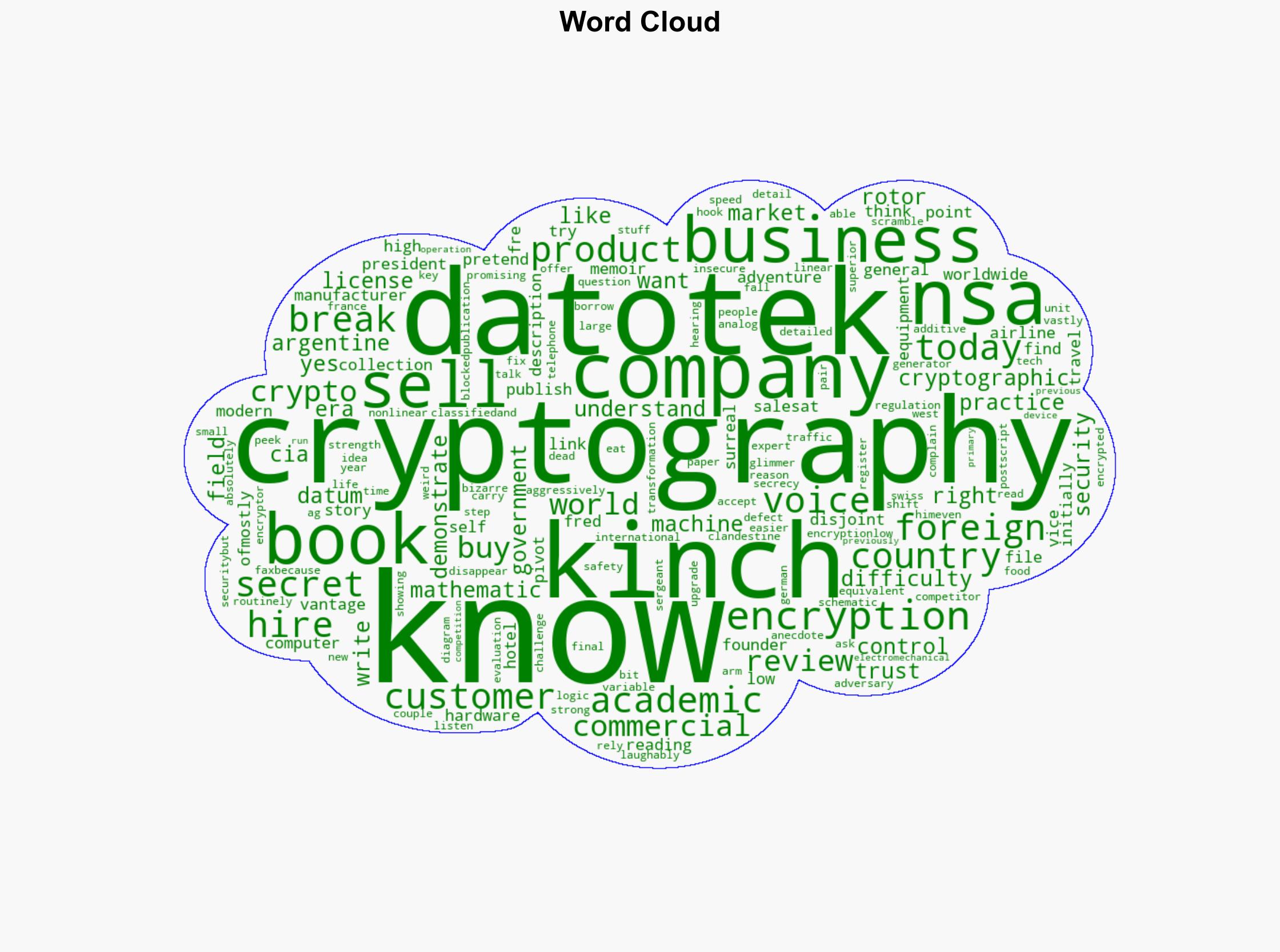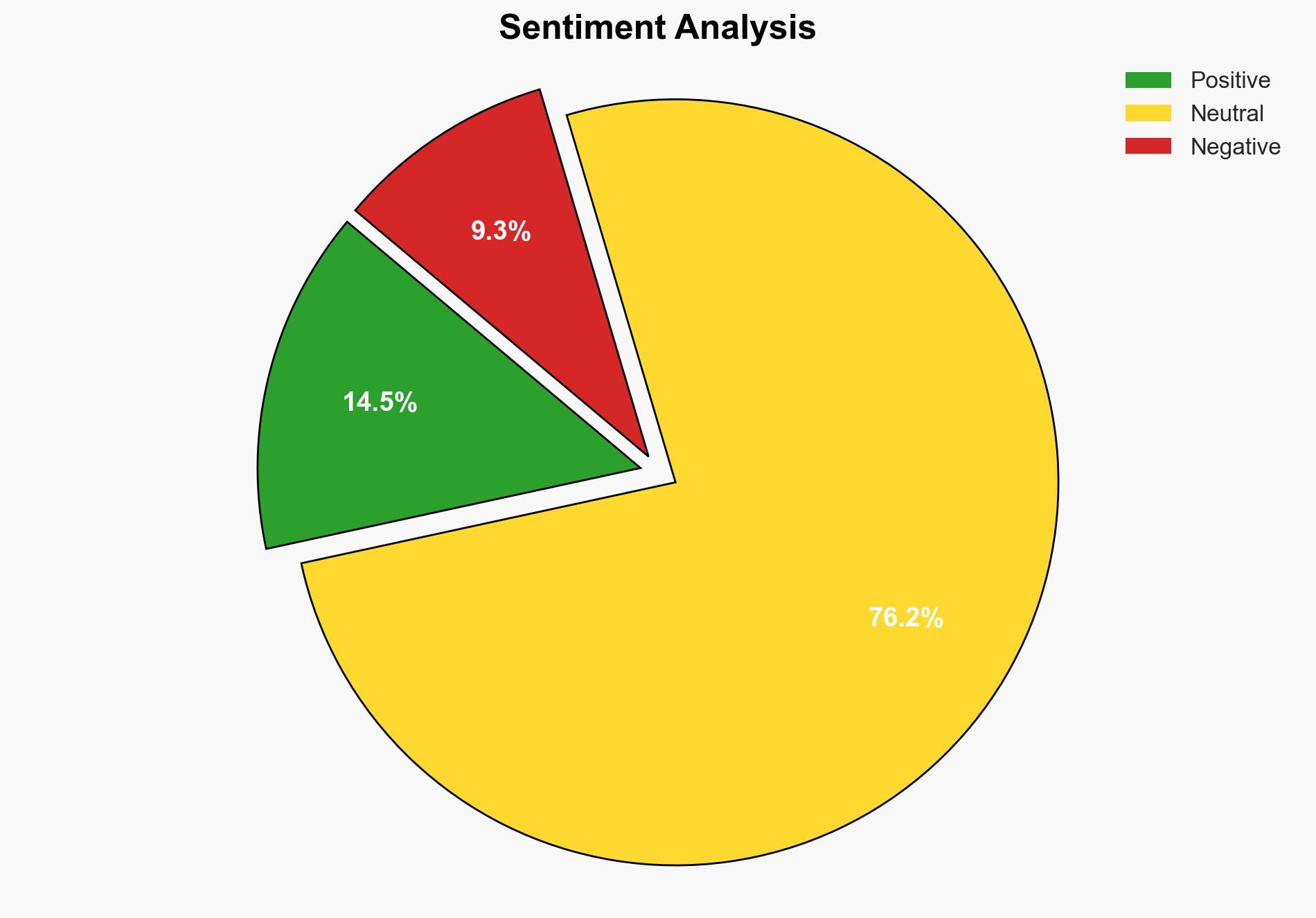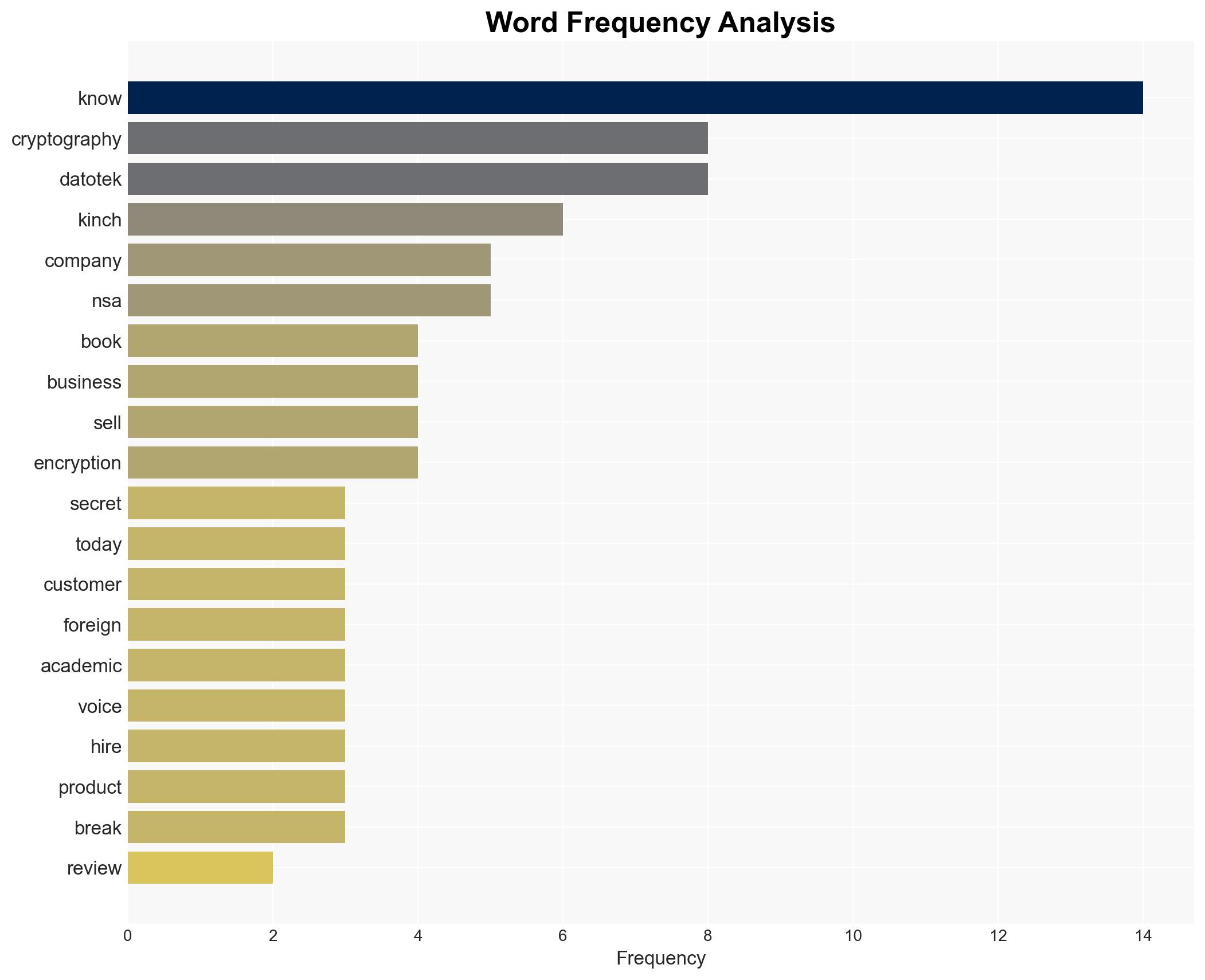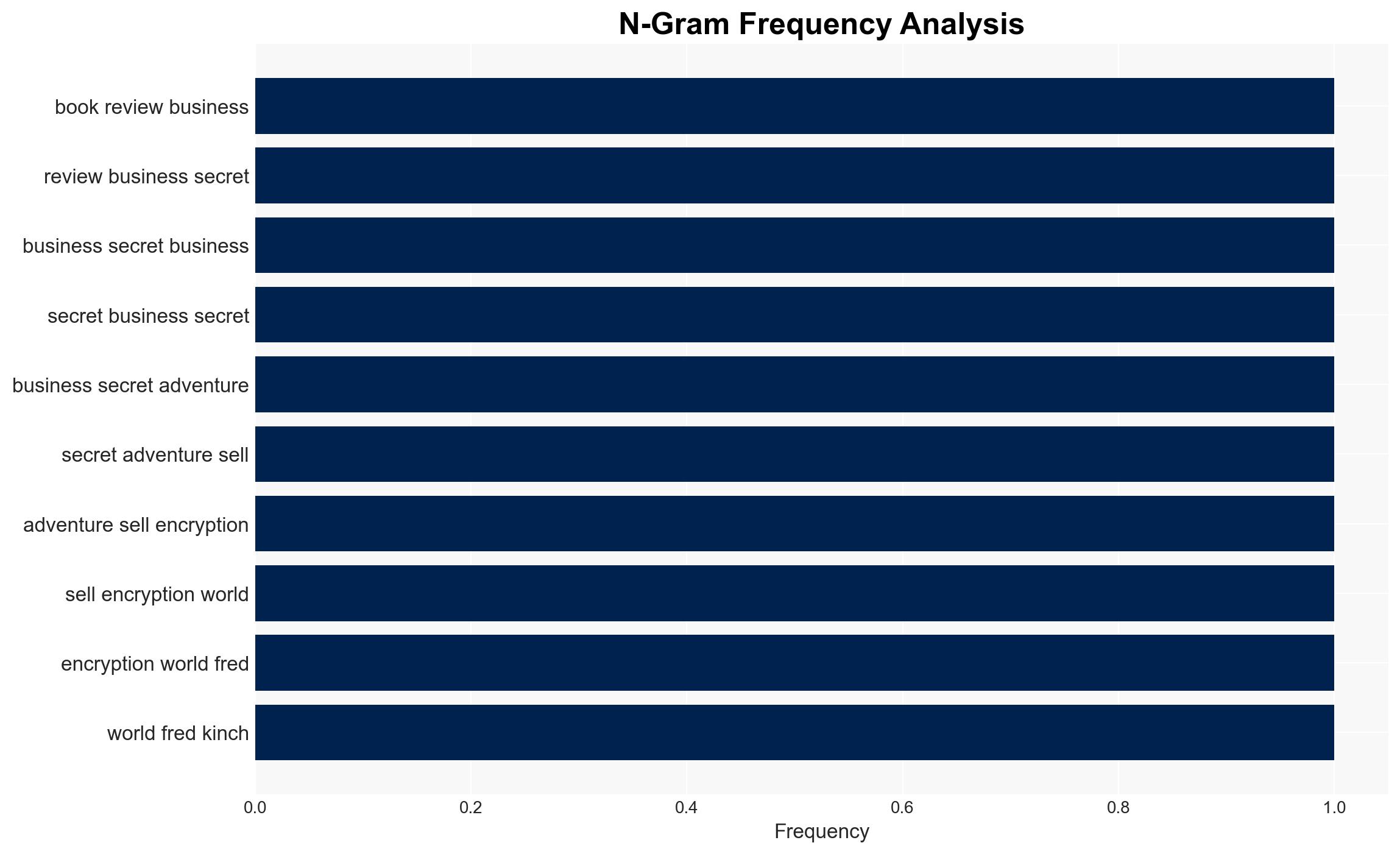Book Review The Business of Secrets – Schneier.com
Published on: 2025-11-14
AI-powered OSINT brief from verified open sources. Automated NLP signal extraction with human verification. See our Methodology and Why WorldWideWatchers.
Intelligence Report: Book Review The Business of Secrets – Schneier.com
1. BLUF (Bottom Line Up Front)
The book review of “The Business of Secrets” highlights the challenges and complexities faced by companies like Datotek in the cryptographic industry during the Cold War era. The most supported hypothesis is that Datotek’s struggles were primarily due to geopolitical constraints and the clandestine manipulation of cryptographic markets by intelligence agencies. Confidence Level: Moderate. Recommended action includes further investigation into historical intelligence operations affecting commercial cryptography and assessing current implications for cybersecurity policy.
2. Competing Hypotheses
Hypothesis 1: Datotek’s business difficulties were primarily due to internal operational inefficiencies and lack of expertise in cryptography.
Hypothesis 2: Datotek’s challenges were largely influenced by external geopolitical factors, including manipulation by intelligence agencies like the NSA and CIA, which controlled cryptographic standards and market access.
The second hypothesis is more likely given the evidence of intelligence agency interference in cryptographic markets and the historical context of the Cold War, where control over encryption technology was a strategic priority.
3. Key Assumptions and Red Flags
Assumptions include the belief that intelligence agencies had significant influence over commercial cryptography and that Datotek’s internal capabilities were inadequate. Red flags include potential bias in the narrative due to the author’s personal involvement and the possibility of deception by intelligence agencies to obscure their influence.
4. Implications and Strategic Risks
The historical manipulation of cryptographic markets by intelligence agencies poses ongoing risks for current cybersecurity practices. There is a potential for similar covert influence in today’s digital landscape, which could undermine trust in commercial encryption solutions. This could lead to political tensions, economic disruptions, and vulnerabilities in critical infrastructure.
5. Recommendations and Outlook
- Conduct a thorough historical analysis of intelligence agency involvement in cryptographic markets to inform current cybersecurity policy.
- Strengthen international cooperation on cryptographic standards to mitigate the risk of covert manipulation.
- Best-case scenario: Increased transparency and cooperation lead to robust and trustworthy cryptographic standards.
- Worst-case scenario: Continued covert manipulation results in widespread distrust and vulnerabilities in global cybersecurity.
- Most-likely scenario: Incremental improvements in transparency, with occasional setbacks due to geopolitical tensions.
6. Key Individuals and Entities
Fred Kinch – Founder and Vice President of Sales at Datotek.
NSA, CIA – U.S. intelligence agencies involved in cryptographic market manipulation.
7. Thematic Tags
Cybersecurity, Cryptography, Intelligence Agencies, Cold War, Geopolitical Influence
Structured Analytic Techniques Applied
- Adversarial Threat Simulation: Model and simulate actions of cyber adversaries to anticipate vulnerabilities and improve resilience.
- Indicators Development: Detect and monitor behavioral or technical anomalies across systems for early threat detection.
- Bayesian Scenario Modeling: Quantify uncertainty and predict cyberattack pathways using probabilistic inference.
Explore more:
Cybersecurity Briefs ·
Daily Summary ·
Support us
·





